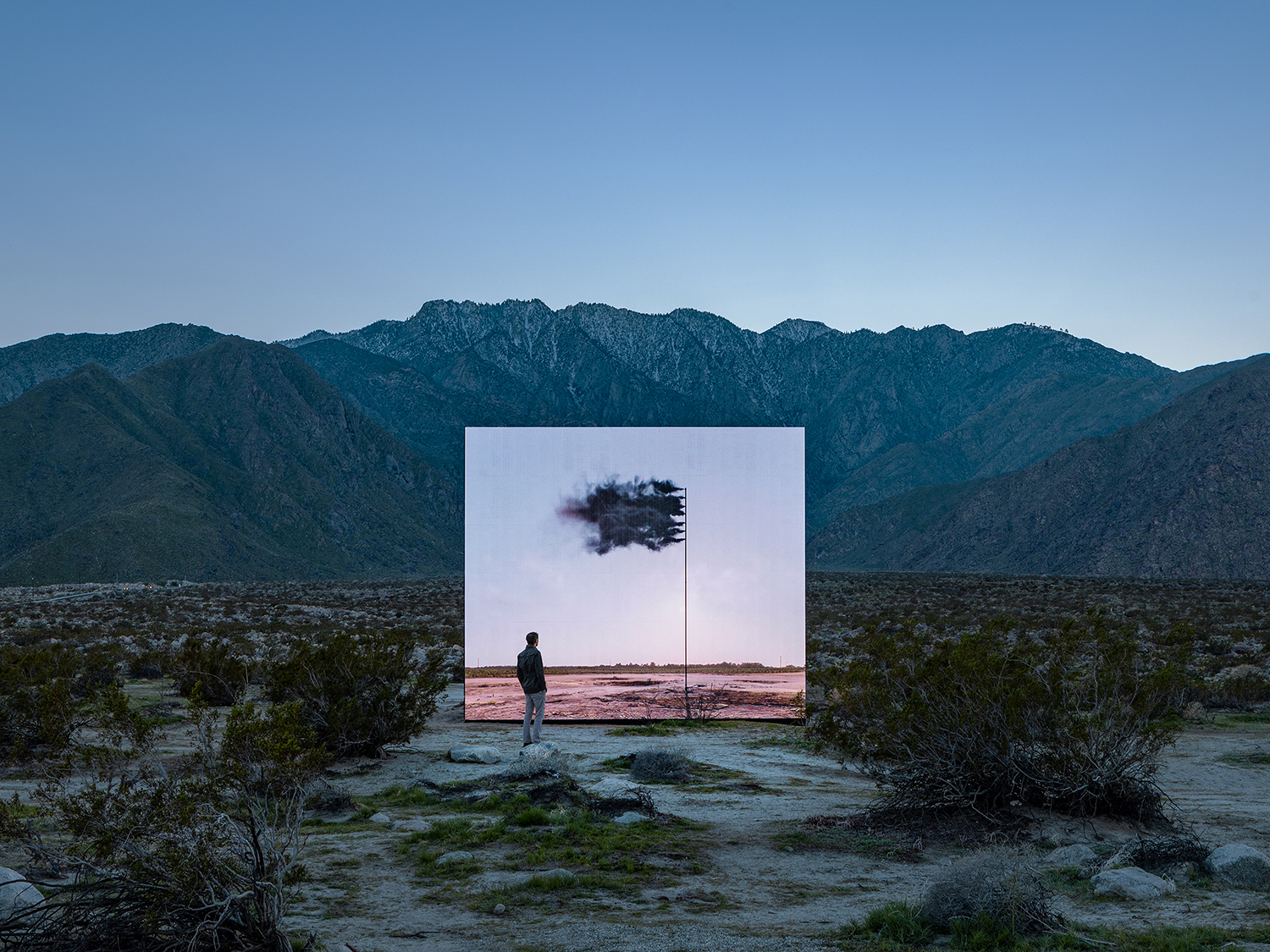Heading for Coachella for the music festival? Make time for a desert detour. The second iteration of the art fair biennial Desert X kicked off February 9, 2019. It introduced 18 site-specific outdoor artworks across nearly 55 miles of the California desert. Like the works from Burning Man, these contemporary works are stunning, provocative, message-driven, and largely ephemeral. So see them while you can. Desert X is on view through April 21, 2019. Here are some of the best works from Desert X 2019.
If you’re going, consider this a preview. And if you can’t make the pilgrimage, settle in and have a look at what the desert holds right now. It’s breathtaking.
What is Desert X?
A relatively new contemporary art fair that’s held biannually, Desert X brings contemporary artists from around the world to the Coachella Valley to create pop-up installations and site-specific pieces.
One huge difference from other art world fairs? This is contemporary art with a mission: raising awareness of environmental and political issues and engaging visitors with the natural world.
Artistic director Neville Wakefield and the husband-and-wife co-curators Matthew Schum and Amanda Hunt (formerly of New York’s Studio Museum) haven chosen artworks that magnify the region’s key attributes. For example, its mid-20th-century architecture; its natural resources; wildfires and other visible results of climate change; its diverse indigenous peoples; and the conflicts that can arise when they all interact.
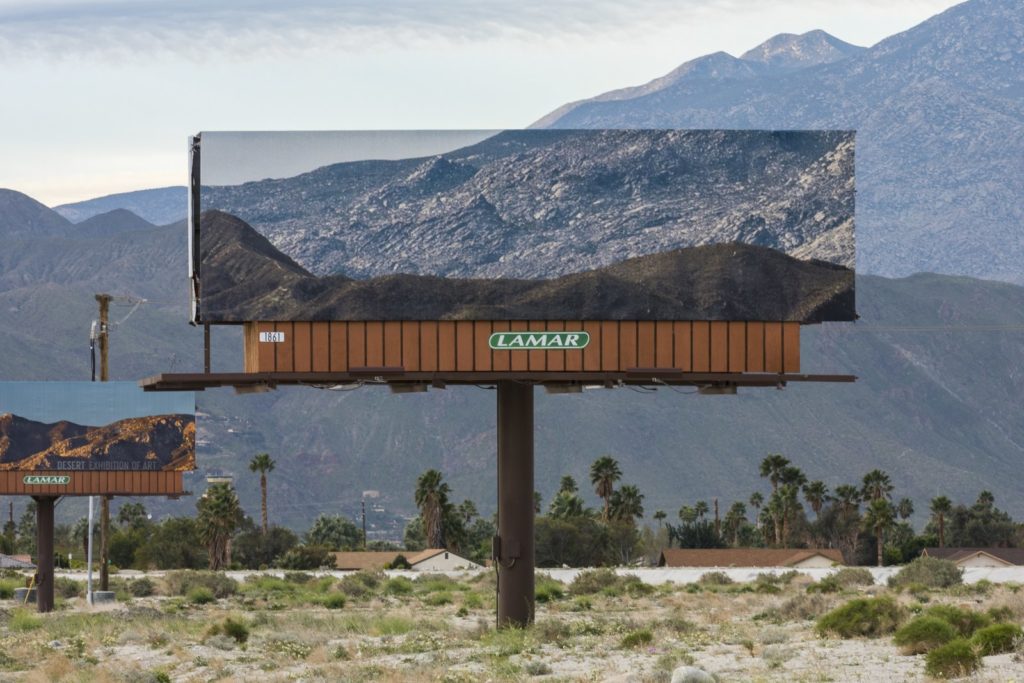
Visible Distance, Jennifer Bolande, 2019. Photo Credit: Lance Gerber.
What are the key elements of the 2019 edition?
Since the first edition in 2017, the geographic borders of Desert X have grown, and now extend from Palm Springs down to the Salton Sea. A couple of the works even cross the border into Mexico.
Visiting Desert X is free and self-guided. And since the Desert X dates overlap with the Coachella music festival weekends, stopping by the installations makes for a great road trip.
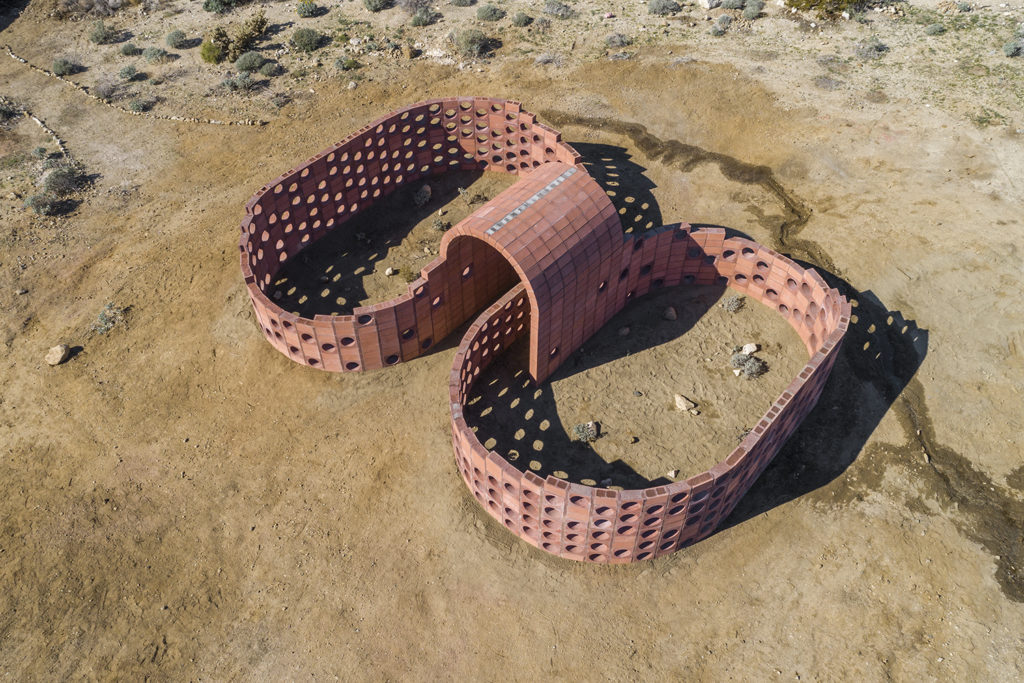
Julian Hoeber, 2019. Photo Credit: Lance Gerber.
Highlights of Desert X 2017
Before diving into the high points of the current show, it’s enlightening to take a look at some of the stand-out installations from 2017. That year, the festival included 16 pieces, with contributions from artists Jennifer Bolande, Will Boone, and Glenn Kaino.
Here are three that, in their own ways, each became emblematic of the first edition:
1. Mirage, Doug Aitken, 2017
Doug Aitken’s mirror-clad house reflected the surrounding mountains, almost disappearing into the landscape. The building’s design referenced architectural styles of the region while the infinite reflections brought up questions about the relationship between the built and natural environments and the pace and reach of commercial development.
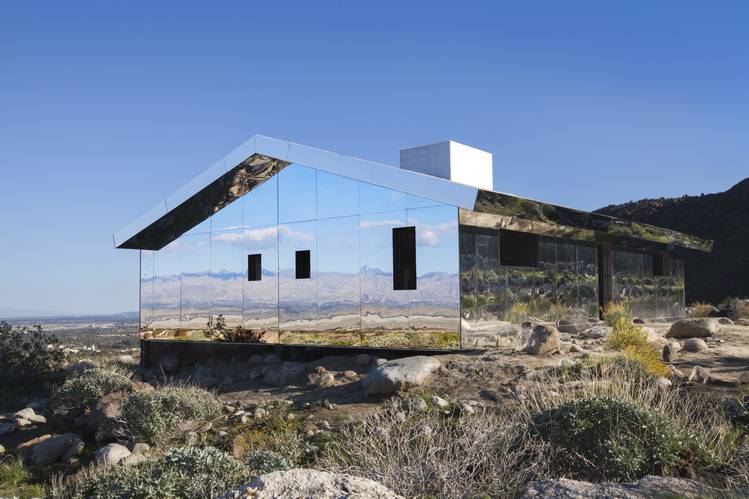
Mirage, Doug Aiken, 2017. Photo Credit: Lance Gerber
2. The Circle of Land and Sky, Phillip K. Smith III, 2017
Philip K. Smith III created a roadside ring of 300 mirrored posts, a kind of Instagram-era response to the form of Stonehenge.

Phillip K Smith III, The Circle of Land and Sky, 2017. Photo Credit: Lance Gerber.
3. I AM, Tavares Strachan, 2017
Tavares Strachan installed neon tubes in 218 trapezoidal holes he dug into the desert floor; they spelled “I AM.” The work communicates different messages depending on whether visitors are on the ground. Or flying overhead.
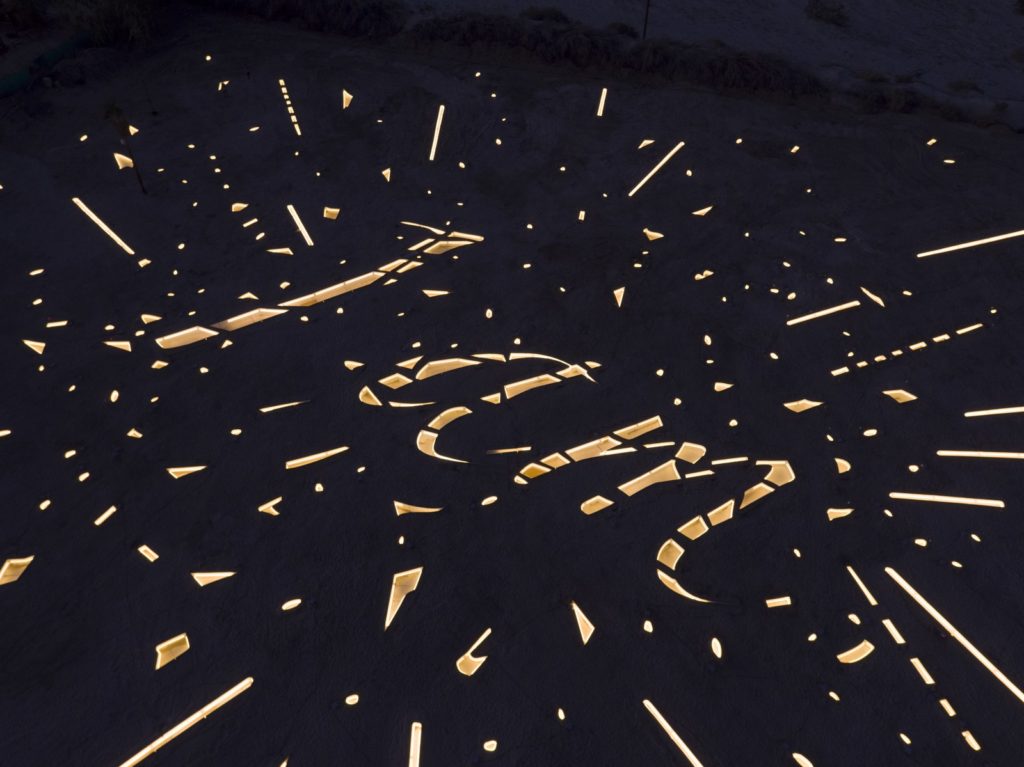
Tavares Strachan, I AM, 2017. Photo Credit: Lance Gerber.
Selections from Desert X 2019
Here are some of the works from the 2019 edition of Desert X:
1. Ghost Palm, Kathleen Ryan, 2019
Palm trees abound in this natural landscape. The familiar plant is recreated in clear materials for Kathleen Ryan’s Ghost Palm. It’s a kinetic piece, and the various components act as wind chimes in the breeze.
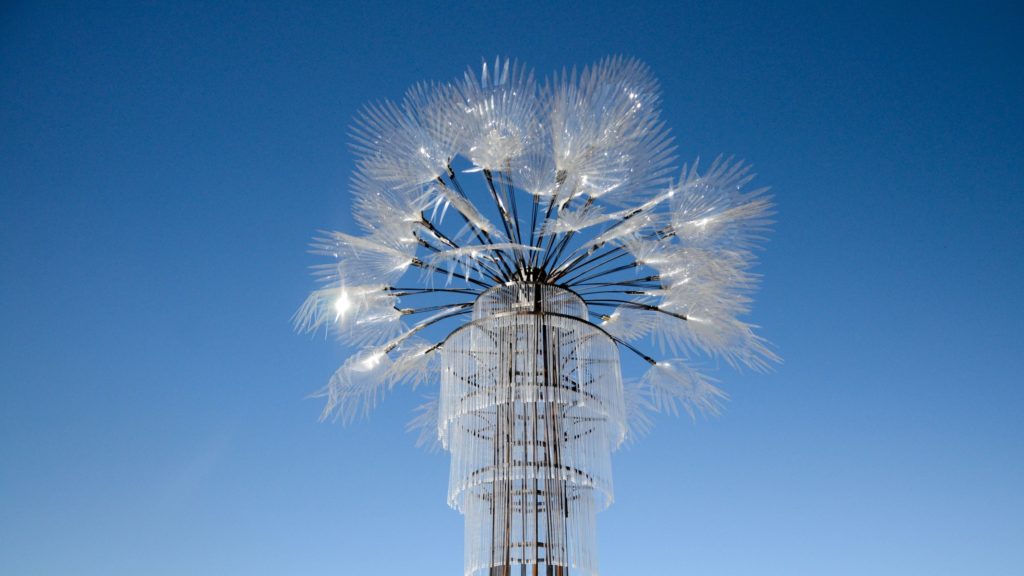
Ghost Palm, Kathleen Ryan, 2019. Photo Credit: Lance Gerber.
2. Nancy Baker Cahill
2Nancy Baker Cahill’s two artworks here: hold your phone up and colorful blossoms begin to dance among the colossal white windmills. Her augmented-reality drawing Margin of Error can be seen in a similar fashion only in the exact right spot by the Salton Sea. Wakefield suggests that the works here by Cahill are what the Land Art movement of the 1960s would look like today. “Here,” Wakefield added, “we have a woman doing something on a vast scale that leaves no trace whatsoever.”
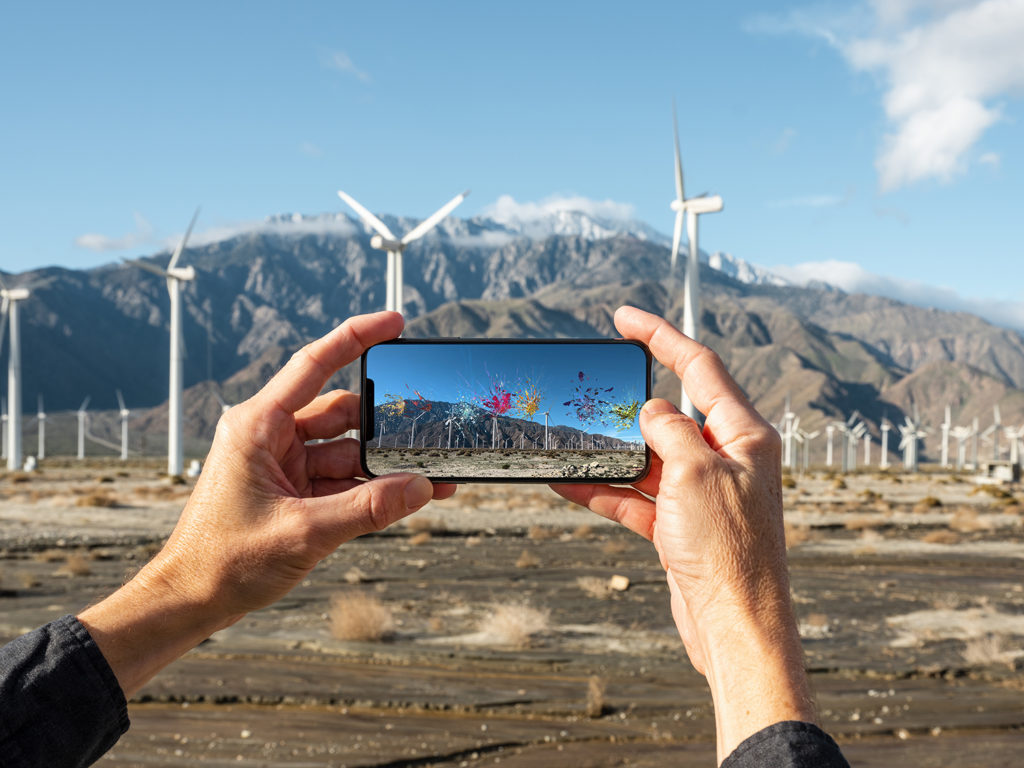
Nancy Baker Cahill. Photo Credit: Lance-Gerber.
3. Eric N. Mack
Eric N. Mack transforms the iconic California gas station into a billowing canopy of 2,300 feet of multicolored fabric (donated by Italian fashion house Missoni).
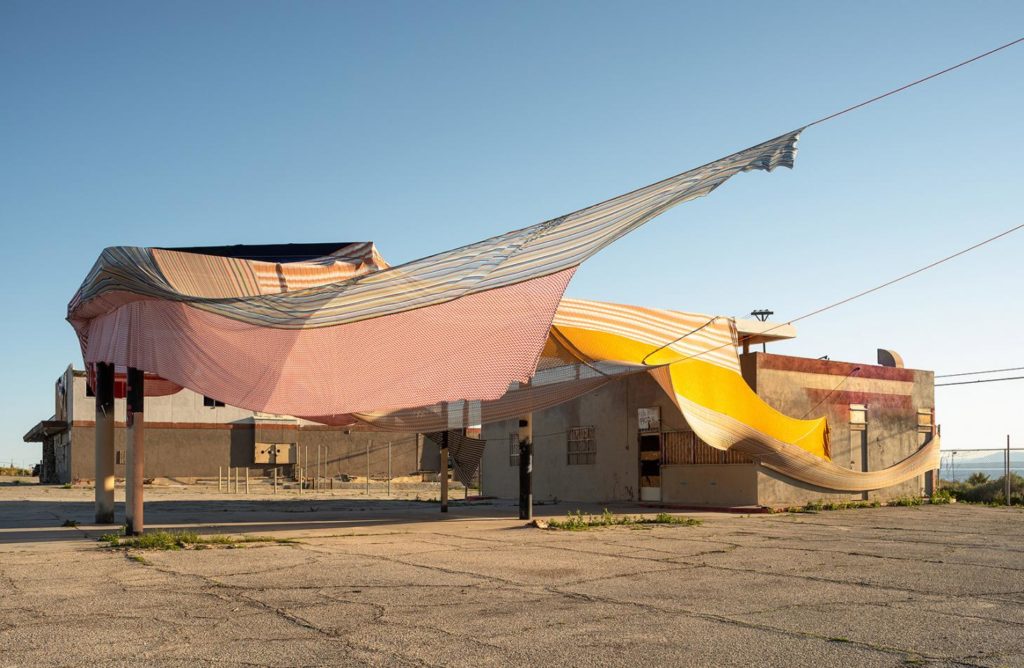
Eric Mack, 2019. Photo Credit: Lance Gerber.
4. Western Flag, John Gerrard, 2019
To create Western Flag, the artist used a massive video screen that superimposes a digital landscape against the actual one. On it, he projects a flagpole spewing black smoke representing carbon monoxide. The land surrounding the flag is a digital recreation of Spindletop, Texas. That’s where the discovery of oil in 1901 triggered the Texas oil boom.
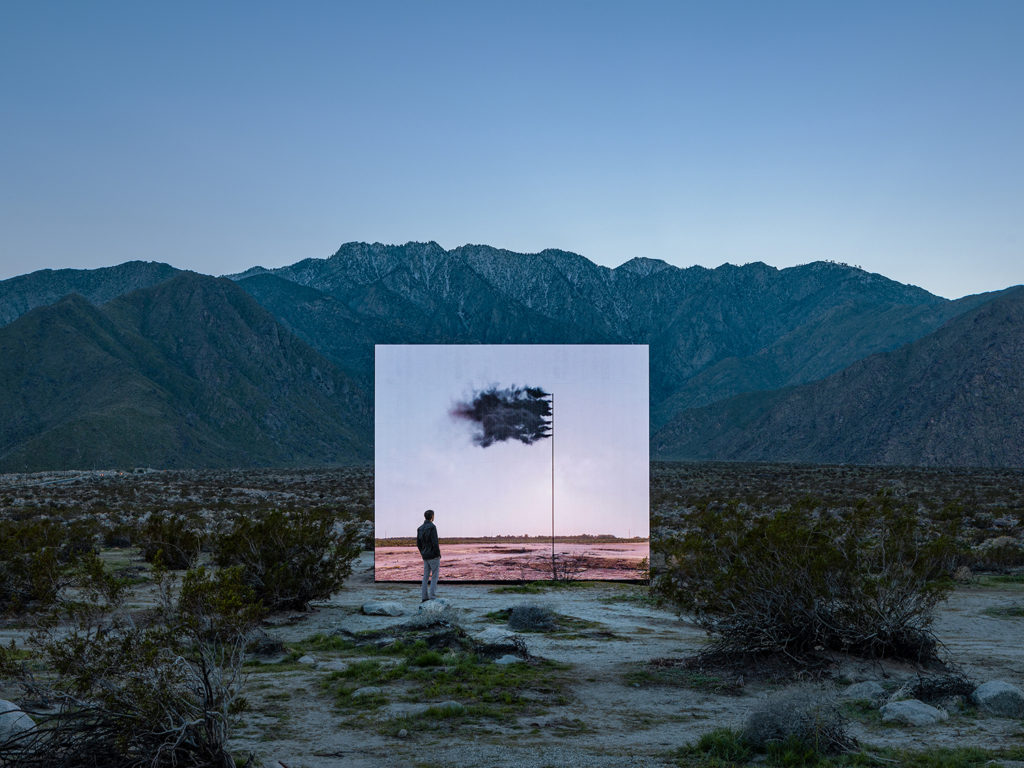
Western Flag, John Gerrard, 2019. Photo Credit: Lance-Gerber.
5. Dive In, Superflex, 2019
The massive pink architectural structure Dive In was intentionally designed to resemble the cheerful fake castles that decorate fish tanks. And to remind viewers of the color of coral. The creators, the Danish art collective Superflex (Jakob Fenger, Rasmus Nielsen, and Bjørnstjerne Christiansen) explain that it was designed to attract the fish that will some day be swimming in the Coachella Valley, itself once the site of an ancient sea. (We learned reading one article about the work that “Coachella” is actually a misspelling of “conchilla,” a Spanish term for the sea shells still to be found in the long-dry area.)
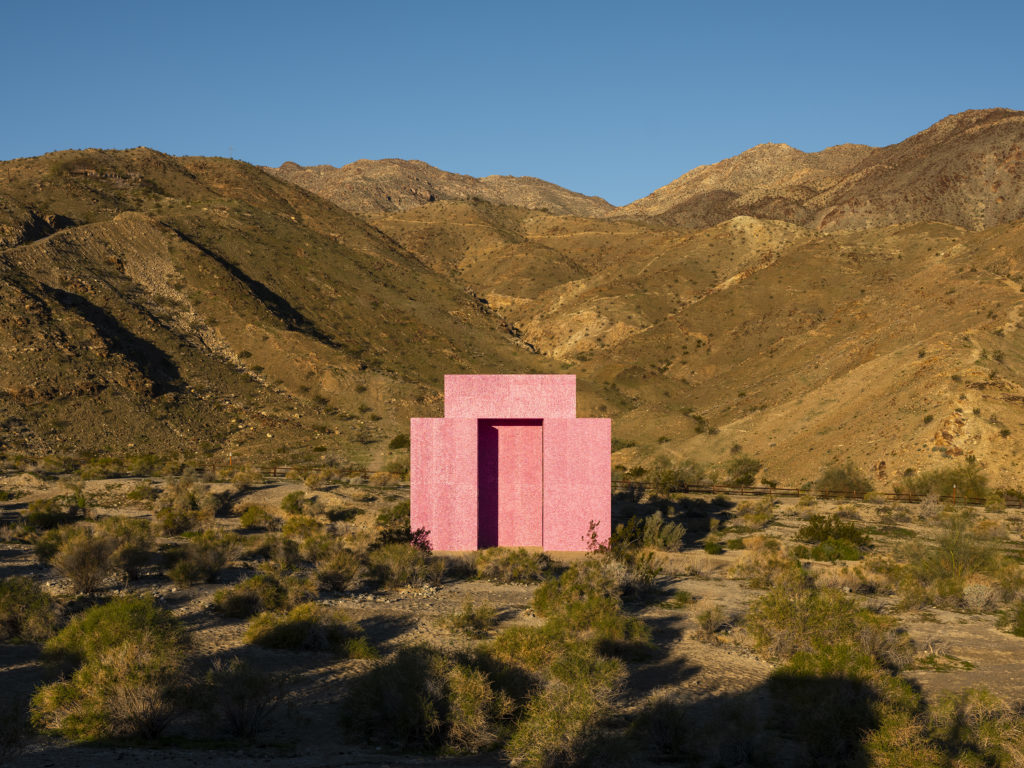
Dive In, Superflex, 2019. Photo Credit: Lance-Gerber.
6. Mosquito Net, Cecilia Bengolea, 2019
Cecilia Bengolea waded into the Salton Sea to install her piece, Mosquito Net. Floating above the still surface of the lake, shaped almost like the foundation of a sunken palace, the piece features figures in dance-like poses.
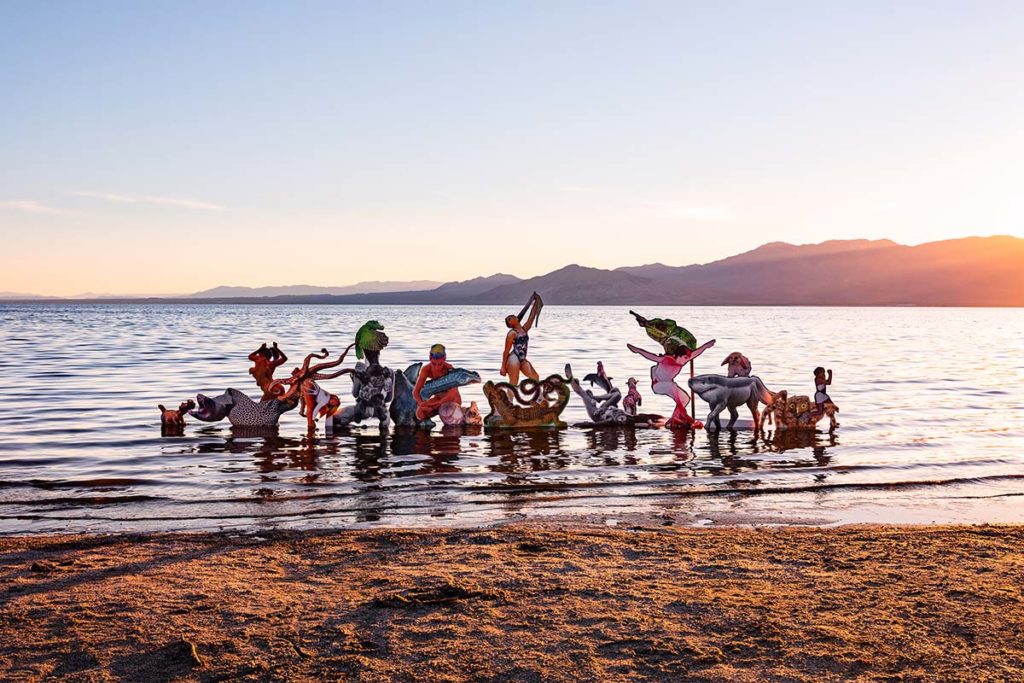
Mosquito Net, Cecilia Bengolea, 2019. Photo Credit: Lance Gerber.
7. Lover’s Rainbow, Pia Camil, 2019
Lover’s Rainbow is one of three pieces in the biennial that will cross the border into Mexico, with a matching sculpture in Baja. The artist is from Mexico City and this work echoes current immigration issues. A multi-colored arch made out of welded and painted rebar cables set against the dramatic mountain backdrop, ‘it brings hope and possibility by connecting the two borders,’ the artist explains.
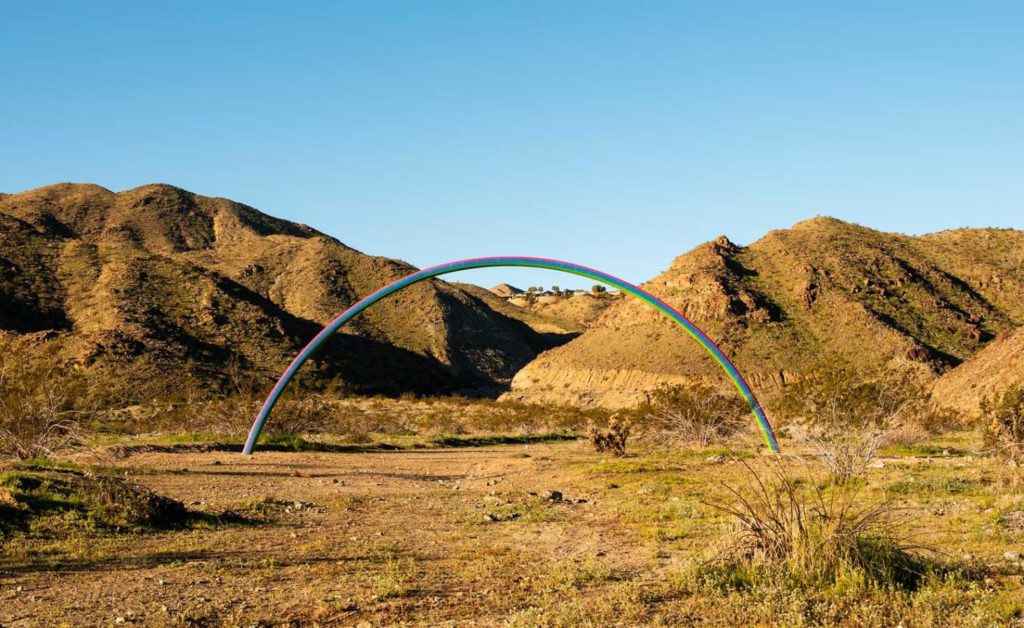
Lovers Ranbow, Pia Camil, 2019. Photo Credit: Lance Gerber.
8. Jackrabbit, Cottontail & Spirits of the Desert, Cara Romero, 2019
Along the Gene Autry Trail, Santa Fe-based photographer Cara Romero, a member of the local Chemehuevi tribe, has erected five massive billboards. The pieces feature young Chemehuevi, cast here as time travelers sent to remind us about the thousands of years that Native Americans have lived in harmony with nature.
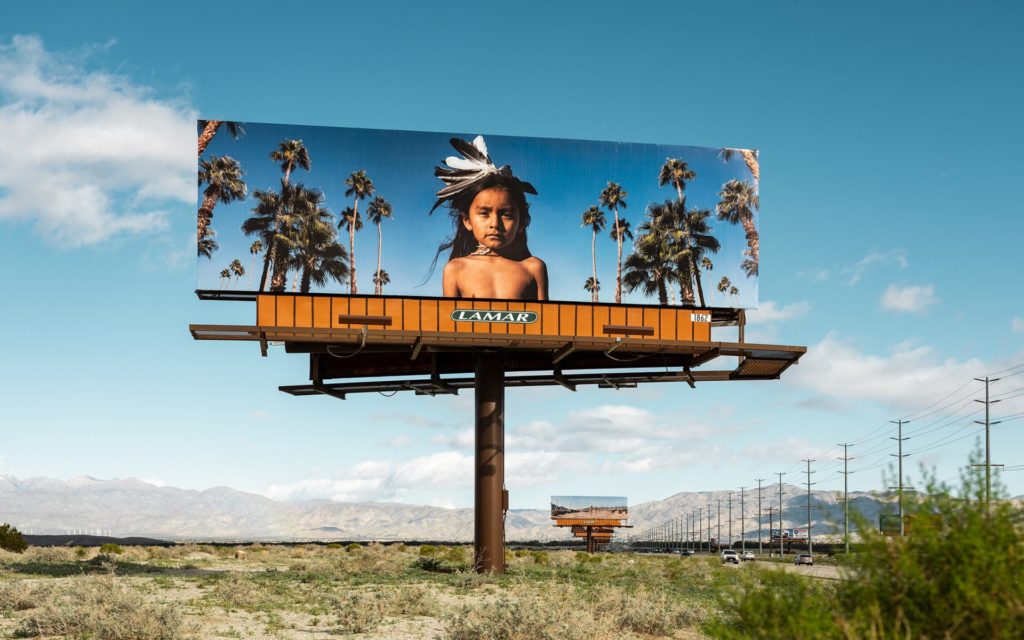
Cara Romero. Photo Credit: Lance Gerber.
9. Peace is the Only Shelter, Mary Kelly, 2019
The artist was inspired to create this work by the anti-nuclear organization Women Strike for Peace (WSP), founded in 1961. The group initiated petitions, vigils, and demonstrations against nuclear testing. A central feature of their advocacy was the “Doomsday Clock,” whose hands tick closer to midnight as humanity inches closer to self-destruction. In this work, a nuclear fallout shelter is reshaped as a bus shelter.
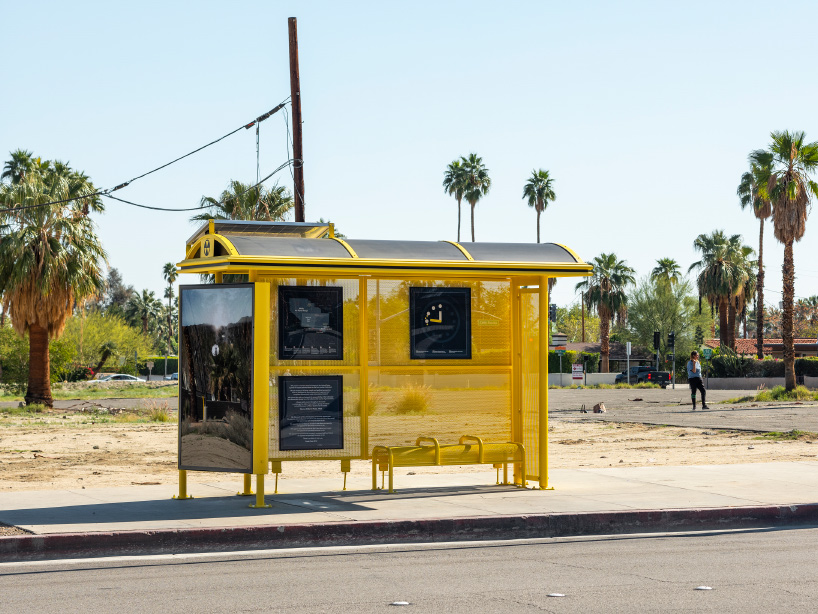
Peace is the Only Shelter, Mary Kelly, 2019. Photo Credit: Lance Gerber.
10. Sterling, 2019
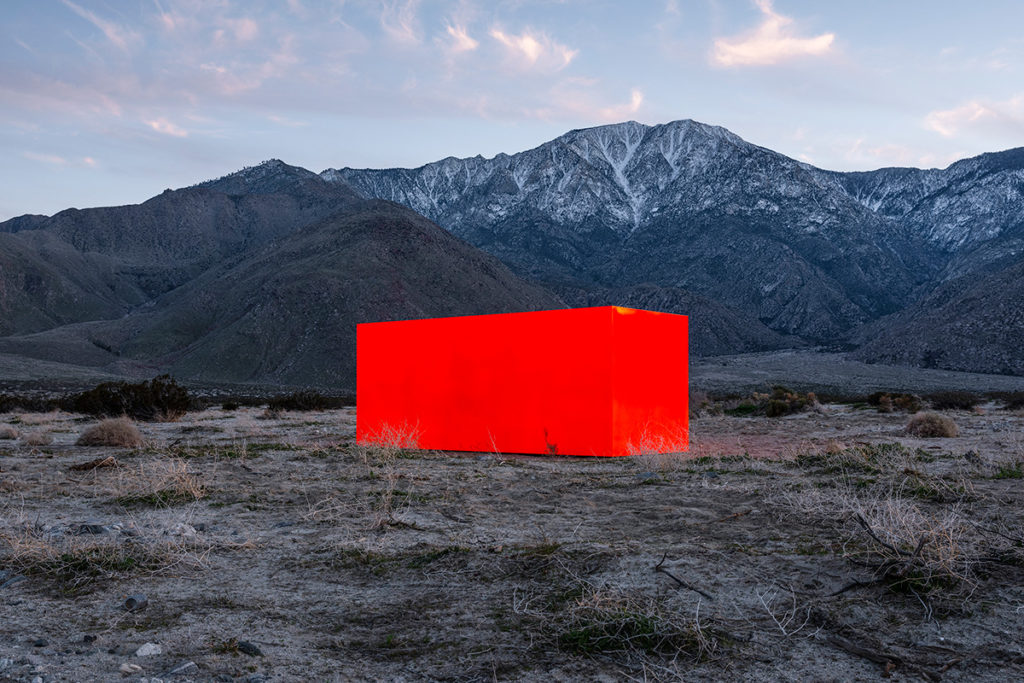
Sterling Ruby, 2019. Photo Credit: Lance Gerber.
see luxury in a new light
Come and join our community! For a weekly round-up of insider ideas and information on the world of luxury, sign up for our Dandelion Chandelier Sunday Read here. And see luxury in a new light.
ready to power up?
For a weekly dose of career insights and advice, sign up for our new newsletter, Power Up, here.
Join our community
For access to insider ideas and information on the world of luxury, sign up for our Dandelion Chandelier newsletter. And see luxury in a new light.

